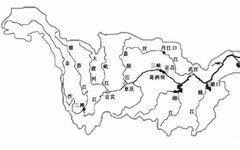Meridians (经络) refer to the collective pathways of the body. The term Jing (经) means “pathway” and is synonymous with Jingmai (经脉), which connects the upper and lower parts of the body and communicates the internal and external aspects. Luo (络), also known as Luo Mai (络脉), signifies a network, representing the smaller branches that diverge from the main pathways. This can be likened to the Yangtze River, where the Jing is the main river, broad and powerful, while the Luo represents the tributaries like the Han River and Gan River, enriching the basin and enhancing the function of the Yangtze.
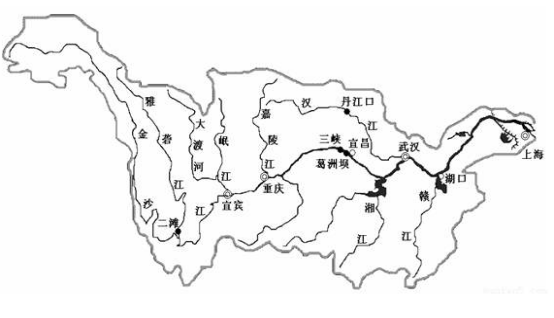
The meridians are the pathways through which Qi and blood circulate, connecting the organs and communicating internally and externally, traversing the body from top to bottom. Just like the acupuncture model in the image, which has lines running vertically, these lines represent the meridians. Through their systematic flow and intricate connections, the meridians link the body’s five internal organs, limbs, and tissues into a unified organic whole, ensuring the normal functioning of life activities.
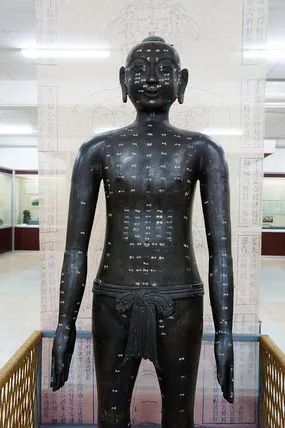
In Traditional Chinese Medicine (中医), the meridian system is vast, with the most important component being the Twelve Meridians (十二经脉). These are the main pathways of the meridian system, encompassing the three Yin and three Yang meridians of the hands and feet, characterized by their connection to the corresponding organs, also known as “Zheng Jing” (正经). The names of the Twelve Meridians are determined by their association with the hands and feet, Yin and Yang, and the internal organs. For example, the Lung Meridian (肺经), formally known as the Hand Taiyin Lung Meridian (手太阴肺经), primarily runs along the upper limb, specifically the inner side, and is associated with the Lung (肺). However, for convenience, it is commonly referred to as the Lung Meridian.
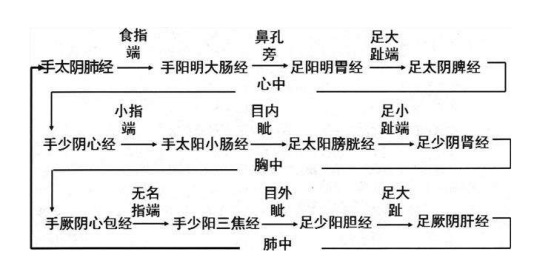
The Twelve Meridians are the primary channels for the circulation of Qi and blood, interconnected in a continuous loop. The flow of Qi and blood in the Twelve Meridians begins with the Lung Meridian, originating from the middle burner, where the essence of food and fluids transformed by the Spleen (脾) and Stomach (胃) combines with the clear Qi inhaled by the lungs, forming high-quality Qi and blood. Following the sequence depicted in the image, it flows through each meridian, ultimately returning to the Lung Meridian, creating an endless loop. The Qi and blood in the Twelve Meridians are in constant motion, perpetually circulating.
Every organ and structure in the body requires the nourishment of Qi and blood to maintain its normal function. The reason Qi and blood can reach every part of the body, providing nourishment and defending against external pathogens, is due to the circulation facilitated by the meridians.
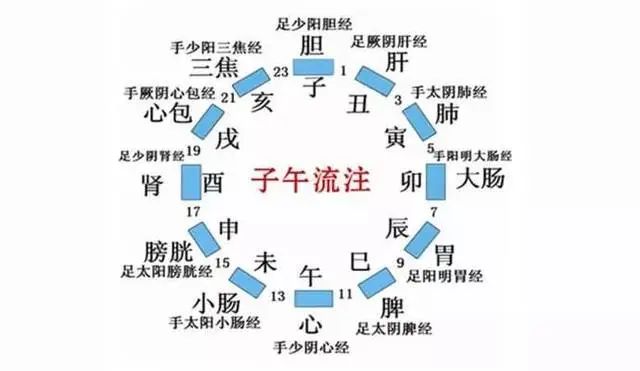
The flow of Qi and blood in the Twelve Meridians also follows a temporal pattern known as Zi Wu Liu Zhu (子午流注). This principle, discovered by ancient TCM sages, posits that the twelve meridians correspond to the twelve two-hour intervals of the day. For instance, from 3 to 5 AM, the Lung Meridian is at its peak, while from 5 to 7 AM, the Large Intestine Meridian is most active. This pattern can help us analyze the significance of symptoms that appear at specific times. For example, if someone wakes up between 1 and 3 AM, it may indicate an issue with the Liver Meridian (肝经), and they can massage the acupoints along this meridian for regulation.
The Eight Extraordinary Meridians (奇经八脉) are also an important component of the meridian system. They serve two main functions: first, they interconnect the Twelve Meridians, enhancing their relationships. For example, the only horizontal meridian, the Dai Mai (带脉), encircles the waist like a belt, connecting the meridians that run along the trunk. Secondly, they act as reservoirs, regulating the Qi and blood within the Twelve Meridians. If there is an excess of Qi and blood in the Twelve Meridians, it first overflows into the Eight Extraordinary Meridians to prevent the body from becoming overly stimulated. Among the Eight Extraordinary Meridians, only the Ren Mai (任脉) and Du Mai (督脉) have their own acupoints.

